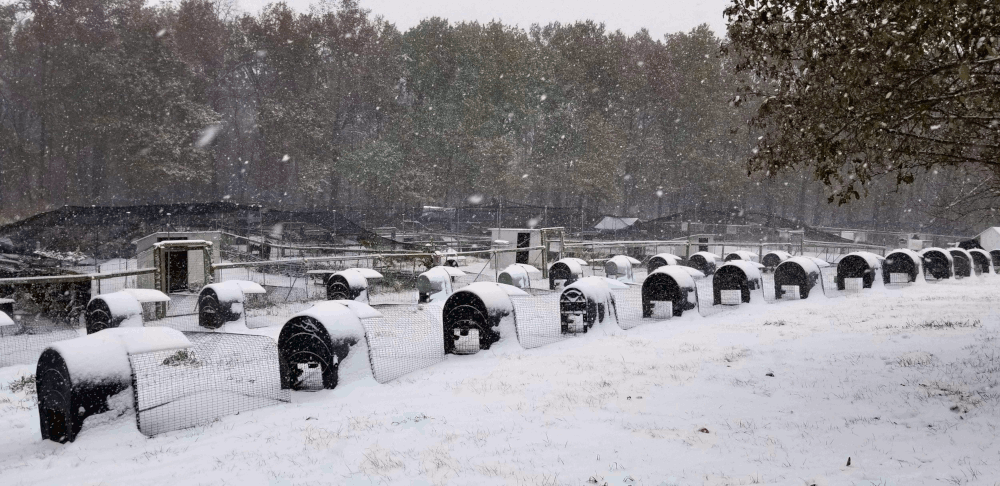
Your Guide to Hatching Eggs
Before you do anything else you are going to want to order yourself an Incubator. Order it, Get it in, Set it Up, and Test it! You do not want to order your eggs the same day you order an incubator and find out there is a shipping delay or something broke in transit and you end up sitting there with no place to put the eggs you ordered. That would be embarrassing and no one likes to waste money.
Picking and Incubator : At Pinnon Hatch Farms we have always used GQF Incuabtors and we swear by them. They are a high Quality, Long Lasting, American Made Incubator that require very little maintenance. There are other brands out there, some cheaper, but GQF is Quality. Shop Now!
Home, Classroom, Light Lab Use : There are a variety of small tabletop incubators that are affordable and perfect for light use. Great for hatching out what you need for you backyard chickens or hatching out chicks in a classroom and learning about embryo development.
Home thru Commercial Use : GQF Cabinet Incubators are what we use on Pinnon Hatch Farms. We run these continuously throughout the summer and have had to do very little maintenance to keep them running. These are perfect for you small hatchery or small farm and if you add a water reserve system to the top they will pretty much run themselves.
Getting Your Fertile Hatching Eggs
The first thing you need to do is acquire Fertile Hatching Eggs. Grocery Store Eggs are not fertile and will not hatch no matter how hard you may try.
A good place to look if you are not to picky about the breed would be a local or nearby farm. I'm sure they would be happy to sell you some fertile eggs. But if you are interested in getting some fun or exotic breeds the internet is the place to go. Online sellers and hatcheries ship fertile hatching eggs all over the country through USPS with great success. Sometimes, rarely, boxes will get a bit beat up but every seller I've ever dealt with is happy to send you replacements if your eggs get a bit smashy.
Storing Hatching Eggs : When storing Hatching Eggs try and keep them at about 55-60° F. Don't store them in the refrigerator that is to cold. A wine fridge can be good if the temp can be set high enough. For best results set eggs within 7 days. Eggs can be hatched later than that but hatch rate will start to decline the longer the eggs are stored.
Note : For best results on eggs ordered through the mail be sure the let them sit undisturbed for 24-48 Hours before incubation.
Setting Up Your Incubator
About 1 Week before getting you Hatching Eggs Disinfect it with a 10% bleach solution, followed by a soapy water rinse to sanitize the environment. Set up incubator in a room that has a steady temperature. Turn on and make sure the incubator is holding the correct temperature and humidity over the next few days and adjust as needed.
Hatching Egg Set Time & Temperature Settings
Optimum temperature : 100.5° Fahrenheit
Temperature range : 99-102° Fahrenheit
Don’t let temperature drop below 99° Fahrenheit
Do not allow temps of 102° Fahrenheit to last more than a few hours
Double-check the incubator’s thermometer with a medical thermometer placed nearby to ensure the gauge is working properly. Keep water channels in the incubator full to facilitate proper humidity Relative humidity
Use a hygrometer to ensure humidity levels are correct throughout the incubation period
Only open the incubator when necessary – doing so can let heat & humidity escape, and can affect the success of the hatch.
Hatching Your Eggs
Hatching Egg Set Time & Temperature Settings Chart
Place the Eggs in the Incubator for begin the Incubation process. The eggs need to be turned throughout the Incubation process. Having an automatic egg turner is the best way to handle this. GQF's Cabinet Incubators come with build in Automatic Egg Turners. The Eggs are turned to keep the embryo from sticking to the shell.
If you do not have and egg turner and don't want to spend the money on one. That's fine. You will just have to pay more attention during the hatching process. Be sure to turn the eggs at least 3-5 times per day. If you do have the money through I would recommend investing in an automatic turner though so you are letting heat and humidity out every time you get in there to turn eggs. Do Not Turn Eggs the last few days of the hatching cycle.
Note : Be sure to wash your hands before turning eggs so you aren't transferring skin oil and germs to the egg shells
Candling Your Hatching Eggs
I will generally candle my eggs for the first time about 7-10 days after you first set the eggs to make sure the embryo is growing properly. This is real easy. You can get a special candling light or you can use about any flashlight you have around the house. Try not to keep the eggs out of the incubator out of the incubator for more than 5-10 minutes.
What am I looking for?
in a dark room shine the light through the top of the shell.
If the inside of the egg is clear - that is, free from visible structures or dark areas - the egg is infertile or the embryo died very early. Remove this egg from the incubator.
If a ring of red is visible within the egg, there was an embryo at some point, but it has died. Remove this egg from the incubator.
If you can see blood vessels within the egg, there is a live embryo inside. Blood vessels in chicken eggs are normally observable within 7 to 10 days of an egg's incubation. By 18 days of incubation, the embryo takes up most of the egg and appears as a dark area within the egg. You can sometimes see movement inside the egg.
If you notice broken or leaking eggs, remove them from the incubator as they are not likely to be viable and may contaminate the incubator. After candling, return eggs to the incubator and return to the day 1-18 turning schedule.
I generally check my eggs a second time at 14-18 days.
Pre Hatching
The last few days of Hatching the embryo will have developed into a chick and will take up most of the space in the egg. The chick is preparing to hatch. You can do a few things to best help the chick prepare.
Stop egg-turning the eggs the last few days with the larger end of the egg facing up. At this point, the chick will position itself for hatching inside the egg.
Maintain a temperature of 100.5° Fahrenheit, but increase humidity to 55°-65° percent.
Your Chicks are finally Hatching!
Your chicks can take up to 24 hours to completely hatch. Let the chicks hatch on their own and don't attempt to help them. Blood vessels that have not yet dried may still be attaching the chick to the shell and helping them can cause internal bleeding and may cause injury or death.
Peeping of the new born chicks will encourage unhatched chicks the hatch out. When the chicks are all hatched out you can lower the incubator temperature to 95° Fahrenheit. Once the chicks have dried you can move them to a Brooder or under a heat lamp with some food and water. Temperature should be kept at 90-95°
-

Incubate
Quality, long lasting, American made incubators that are perfect for any size farm or hatchery. Shop with us today and start hatching.
-

Hatch
These American made incubators are perfect for running with a 1500 or 1502 Cabinet incubator. Get your Hatchery running today!
-

Brood
These brooders are great for increasing the survival rate of your hatch. Perfect for growing your small farm or hatchery.


